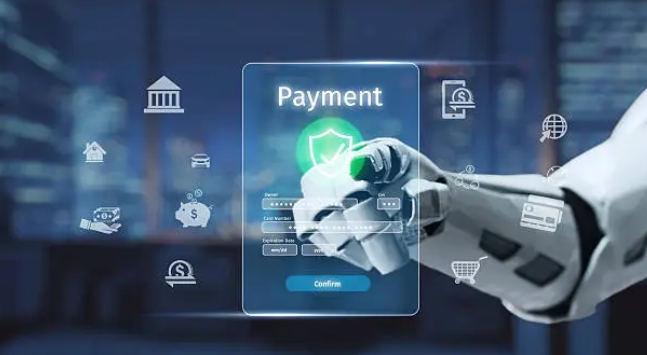
In the fast-moving digital economy, the manner in which you pay for goods and services is changing at warp speed. Currently, AI lies at the heart of this revolution, and its potential facilitates efficiency, security, and personalization in payment mechanisms.
From real-time fraud detection to faster cross-border transactions, AI is no longer someone’s little helper. It’s also woven into the fabric of modern financial infrastructure. Every time you tap your phone to pay for your takeout coffee, send money to a friend in another country, or buy something online, invisible AI algorithms are making decisions about whom to trust.
The influence of AI is believed only to grow as payment processing volumes rise and customers demand immediate, frictionless transactions—the arena in which AI has the most potential applications that are molding the new financial services industry.
But so, what is AI’s potential in payments processing, and why is it affecting your ability to move money like never before?

1. Helping in Improving Transaction Security
AI in payment processing offers some of the most effective ways to enhance security. During the ongoing online fraud epidemic, AI in payment processing acts as the first line of defense. Legacy rule-based solutions are often inadequate in addressing the rapidly evolving tactics of cybercriminals. On the other hand, AI engines can learn and evolve to sift through massive amounts of transactional data for any patterns indicative of fraudulent behavior.
With the help of machine learning, AI in payment processing evaluates several factors to determine if a payment is legitimate. For instance, if a credit card is used in two different countries within moments of each other, AI systems can immediately flag or block the transaction.
This early capture saves not only consumers but also tens of millions of dollars annually for financial institutions. Additionally, by using predictive analytics, AI in payment processing can even predict potential fraud before it happens, enabling digital intervention rather than digital damage.

2. Streamlining Payment Operations Through Automation
AI is also transforming the efficiency of payment systems. In the classic financial processes, a significant amount of work was manual and labor-intensive, involving error-prone tasks such as reconciliations, investigating disputes based on customers’ insistence that their accounts were charged inappropriately. With AI-powered automation, today, there is far less waste associated with these inefficiencies.
AI reduces human errors and speeds up transaction times by analyzing vast amounts of data quickly and with high accuracy. For example, automated reconciliation systems can instantly match payments to invoices, identify inconsistencies, and flag any anomalies for review by a human.
Furthermore, chat internet robots and cyber assistants are also used by payment companies to answer customer questions, modify account information, and resolve minor disputes, but with a twist – 24/7 service.
Additionally, implementing automation through AI provides further benefits, such as keeping pace with the evolving changes to financial compliance. With the help of natural language processing (NLP), AI can read new policy documents, understand their implications, and assist institutions in making adjustments to their systems accordingly. This will reduce the administrative burden and ensure businesses comply with international financial rules.
3. Improving Customer Experience and Personalization
AI is the agent of change, including helping improve the customer experience. In a time when convenience is key, payment products and services are using AI to provide fast, convenient, and personalized experiences. Through analysis of data, AI is able to learn about customer behavior, such as what they buy, when they buy, and how they would like to pay, and tailor services accordingly.
For instance, AI-based services can recommend the most suitable way for a specific user to pay, offer them dynamic rebates, or suggest approaching payment in installments when making a significant purchase.
Additionally, digital banking platforms are integrated with AI-driven conversational tools that allow the customer to get up-to-the-minute balances, set up payments, or even ask for financial advice. That’s the level of personal services experience that engenders trust and satisfaction, turning what were once routine transactions into a pleasurable one.
Additionally, AI enhances accessibility. Vocal interface payment functions utilizing voice recognition help those who are visually impaired to perform transactions. This inclusion can and will help forward financial outreach, which is a part of a global effort to improve financial inclusion.
4. Revolutionizing Fraud Detection with Predictive Intelligence
Artificial intelligence (AI) is also widely recognized for its role in fraud prevention, and predictive intelligence takes it one step further. Legacy fraud systems typically respond after the fact. AI examines beyond past behavior and predicts risk patterns before fraud phenomena are actually observed.
By processing data in real-time, AI identifies subtle anomalies that may escape human notice. For instance, an AI system could identify a pattern of small test purchases — a common method for fraudsters to verify that they have stolen cards — before large transactions occur. This quick detection saves significant losses and makes consumers and financial bodies more reliable in each other.
Additionally, the AI continually learns from each new data point it encounters, refining its models and becoming more accurate over time. This flexibility allows security moves to evolve as cyber threats do, making for a self-enhancing defense that today’s systems can’t match.
5. Facilitating Cross-Border and Real-Time Payments
One significant benefit of AI technology in cross-border, real-time payments is that it enables transactions to be faster and more efficient. Overseas transactions can be encumbered by diverse legislation, volatile exchange rates, and lengthy delays.
AI addresses these challenges by ensuring the optimal route for transactions, taking into account factors such as transaction routing, currency fluctuations, and other relevant considerations, while also ensuring compliance across different geographies.
For instance, AI programs can identify the most effective payment corridors in such a manner that reduces time lapses and fees.
Moreover, by predicting currency direction, AI enables companies to determine the optimal time to make payments, thereby preserving value and minimizing risk associated with volatility. This is especially useful in cases where e-commerce marketplaces and logistics operators require agility and efficiency.
In the domestic field, checkpoints are used in real-time payment systems to confirm identities, verify balances, and authorize transactions in milliseconds. AI makes it as fast and secure as sending money with the click of a button in our world.
Conclusion
The evolution of payment processing is now being fuelled by artificial intelligence. It improves security with smart fraud protection, increases productivity via automation, and delivers more satisfied customers through personalization. In addition to improving over time, AI is constantly evolving and learning from each transaction, allowing it to continue operating even more efficiently.
As cross-border commerce becomes increasingly interconnected, AI will continue to shape payment ecosystems that are faster, more secure, and more inclusive.




